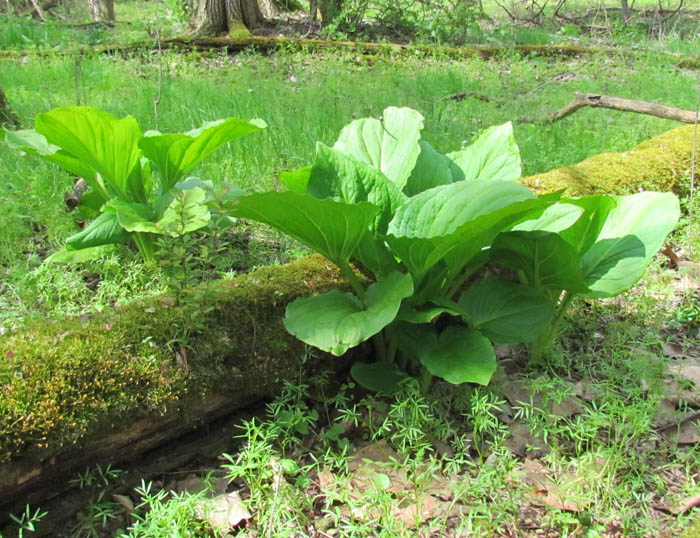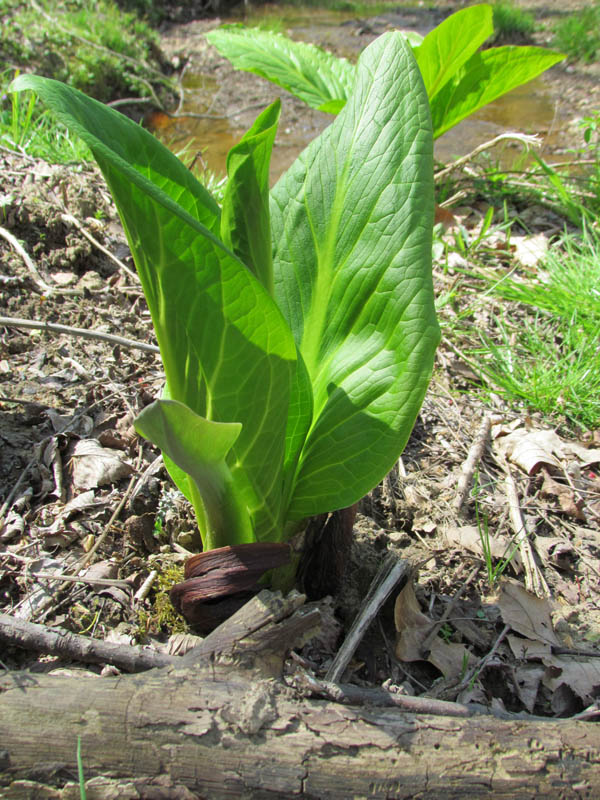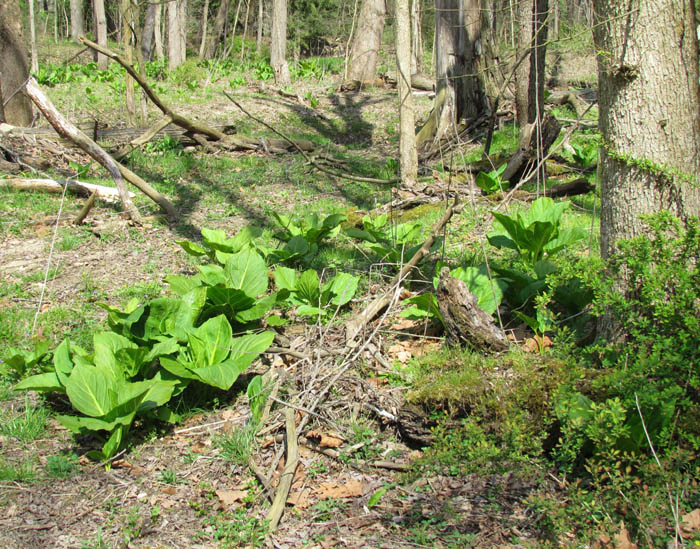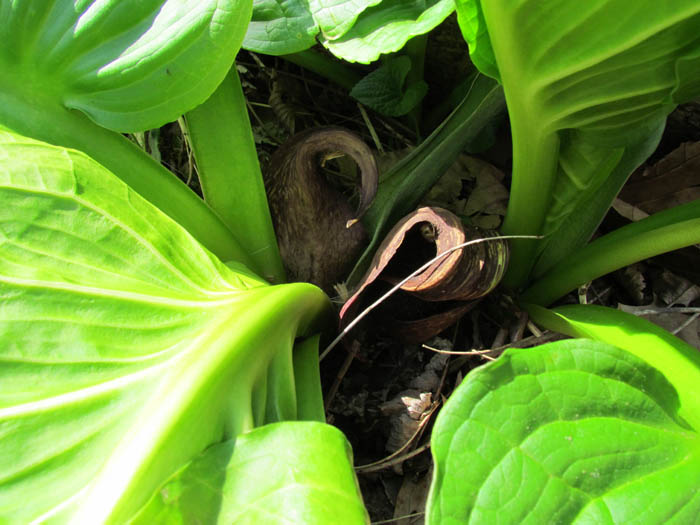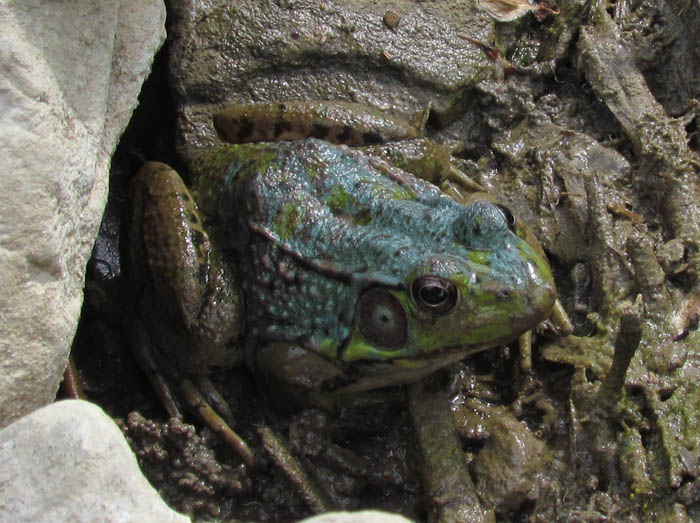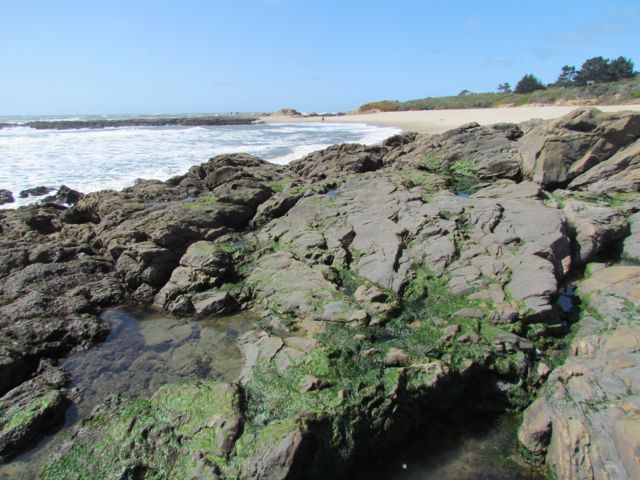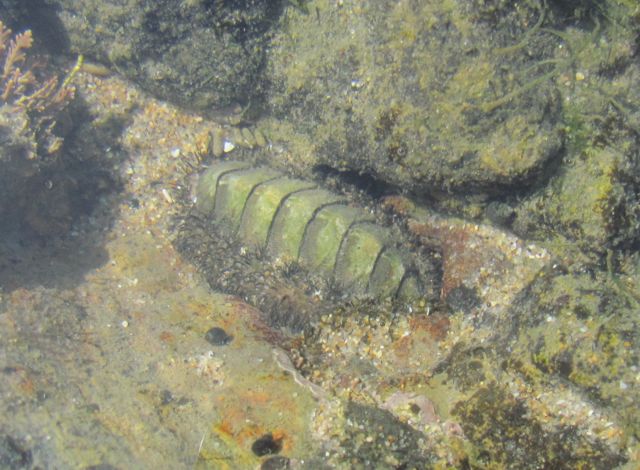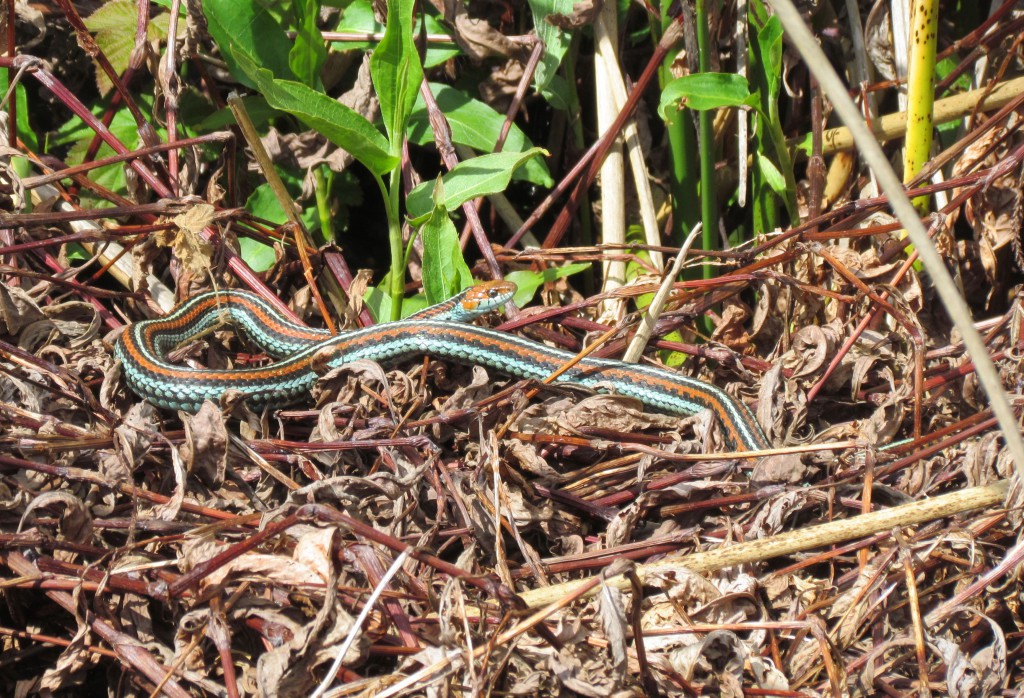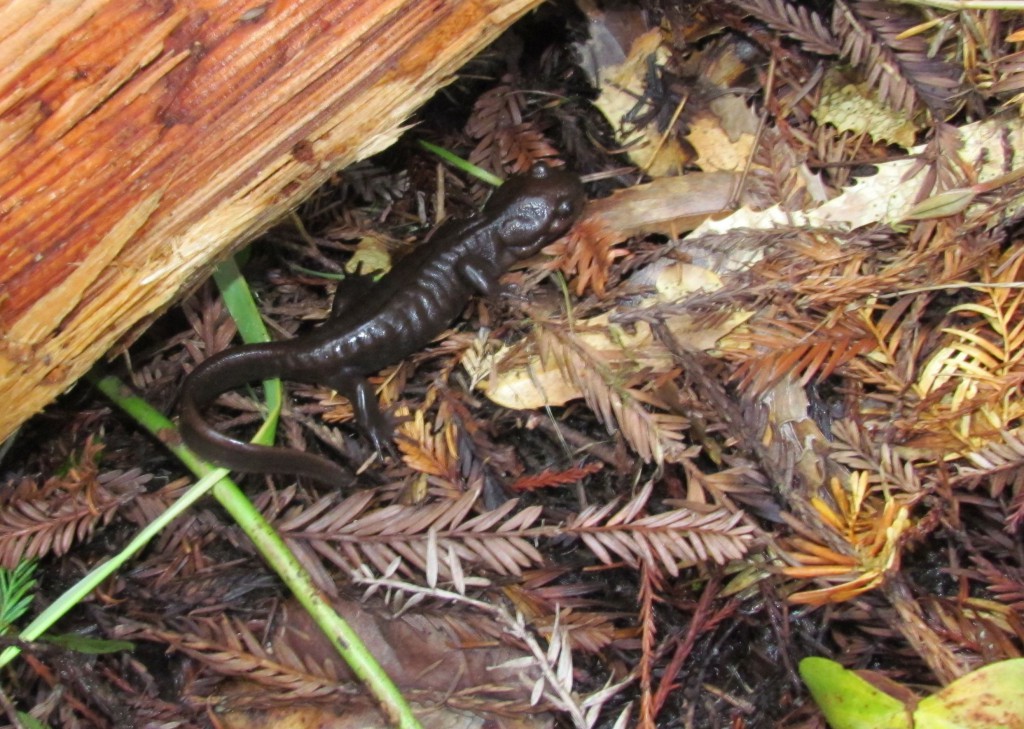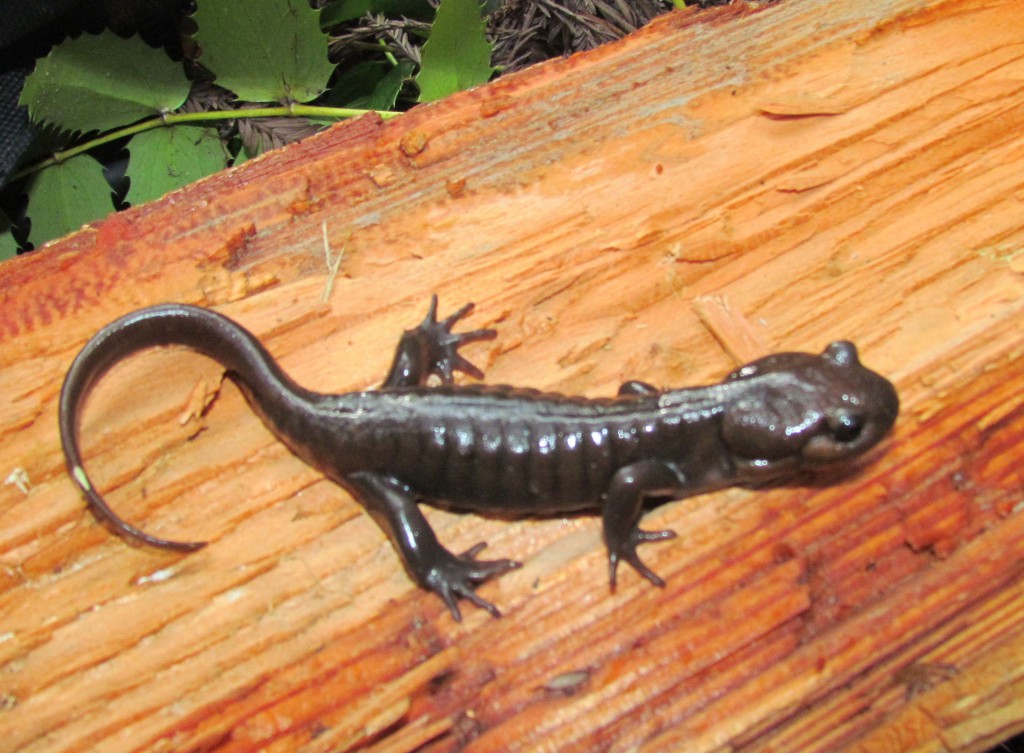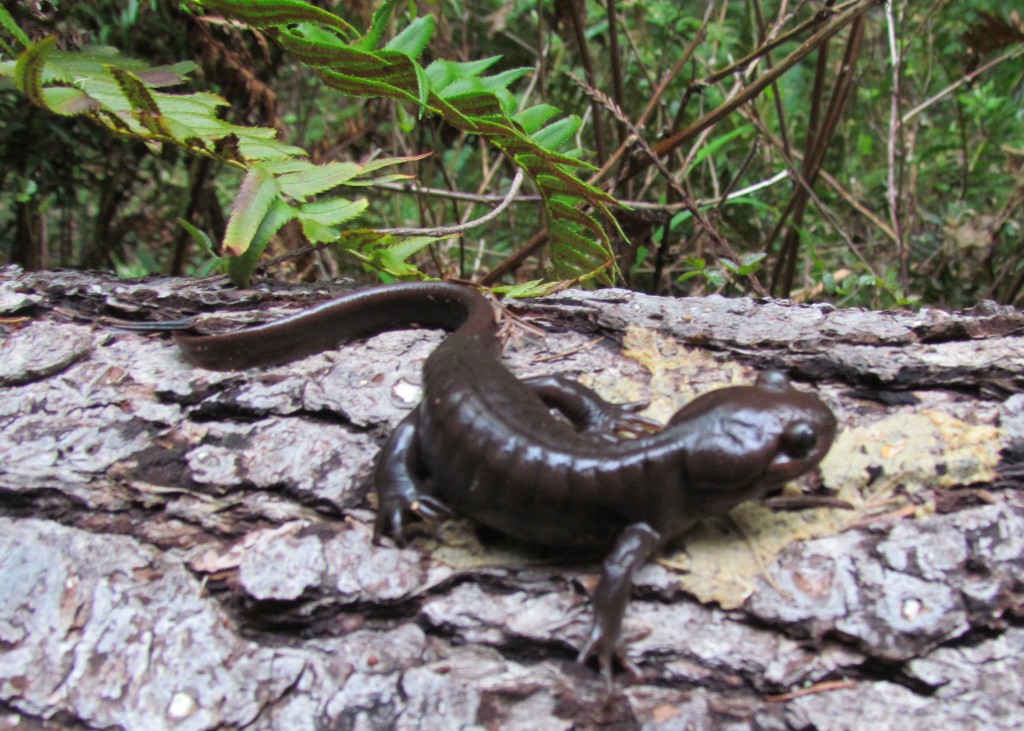The first thing you notice about Skunk Cabbage is how surprisingly big it is. Walking through the forest and coming across this large, leafy plant makes quite an impression. It is easy to recognize, with its huge leaves rising directly from the ground.
Skunk Cabbage is a low growing, foul smelling plant that prefers wetlands. It flowers early in the spring when only the flowers are visible above the mud. The stems remain buried below the surface of the soil with the leaves emerging later.
Breaking or tearing a nearly two foot long leaf produces a pungent odor, which is the source of the plant’s common name. The foul odor attracts pollinators and may also discourage large animals from disturbing or damaging the plant.
Many fly species, as well as some butterflies, bees and beetles pollinate Skunk Cabbage. In the fall, Skunk Cabbage leaves fall over and begin to rot. Small animals, including slugs, millipedes, and pillbugs eat the old leaves, but Skunk Cabbage leaves are poisonous to mammals (including us). The large fallen leaves also provide shelter for small animals.
In late winter and early spring, Skunk Cabbage has a remarkable ability to produce heat that allows it to emerge and bloom even when the ground is still frozen. When temperatures are freezing, the flower buds can warm up to 70 degrees, which melts the snow around the plant. The flowers are characterized by a mottled maroon hood-like structure.

